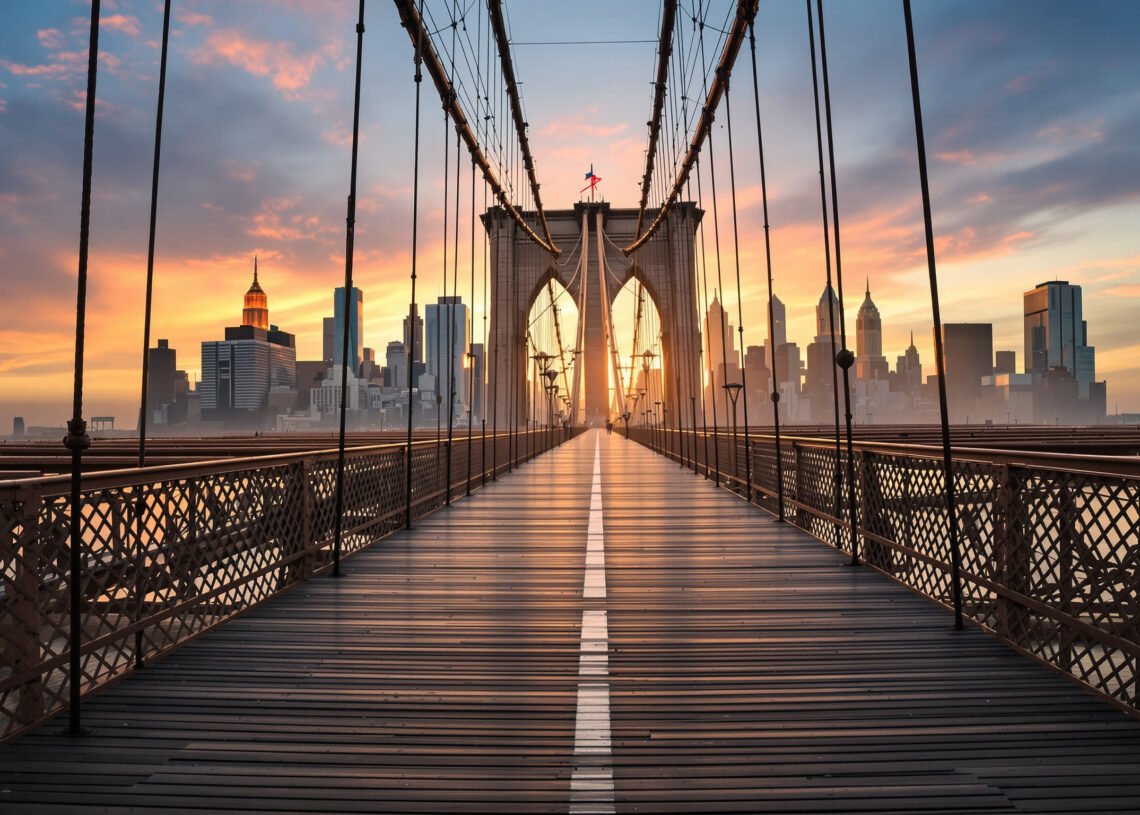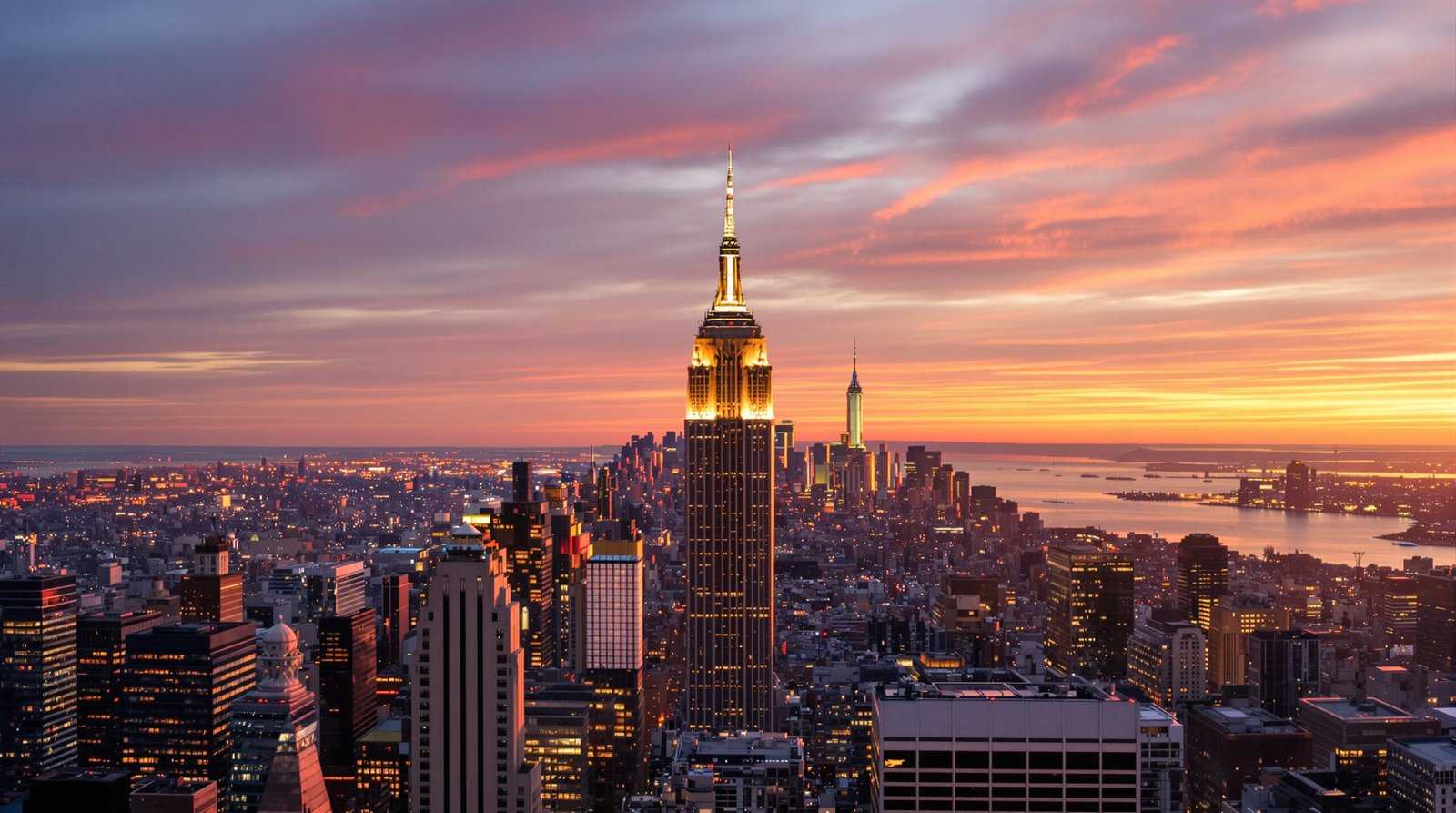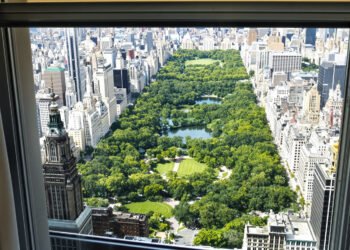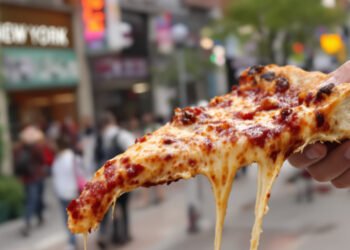Key Takeaways
- Perfectly Paced Itinerary: This guide provides a day-by-day plan to experience NYC’s top attractions without feeling rushed, from the Statue of Liberty to the Brooklyn Bridge.
- Iconic & Local Mix: Discover how to balance world-famous landmarks like Times Square and the Empire State Building with authentic neighborhood experiences in Greenwich Village and Williamsburg.
- Smart Travel Tips: Learn insider tricks for navigating the subway, saving money on food and attractions, and choosing the best time to visit for your travel style.
- Logistical Guidance: Get practical advice on where to stay, how to get around, and why travel insurance is a must-have for your trip to the Big Apple.
- Food & Culture: Uncover the city’s diverse culinary scene, from classic New York pizza slices to trendy rooftop bars and bustling food markets.
Introduction
Welcome to New York City! As a local who has spent years uncovering every corner of this incredible metropolis, I can tell you that the energy here is unlike anywhere else on Earth. It’s a city of dreams, a concrete jungle where history is written on every block and the future is constantly being imagined. For a first-time visitor, the sheer scale of it all can feel overwhelming. Where do you even begin with only three days?
That’s where this guide comes in. I’ve crafted this 3-day New York itinerary to give you the perfect blend of iconic experiences and local secrets. We’ll hit the must-see sights that you’ve dreamed of, but we’ll also wander off the beaten path to discover the charming streets, unique flavors, and vibrant culture that make this city truly special. Forget the frantic tourist dash; we’re going to experience New York with the confidence of a seasoned traveler and the wonder of a first-timer.
This isn’t just a checklist of places to see. It’s a blueprint for an unforgettable adventure, packed with practical tips, personal recommendations, and the kind of insider knowledge that turns a good trip into a great one. So, lace up your most comfortable shoes, bring your appetite for adventure (and pizza), and get ready to fall in love with the greatest city in the world.
Planning Your 3-Day New York Trip
Timing is everything when planning a trip to New York. Each season offers a completely different vibe. Spring (April to June) and Fall (September to November) are arguably the best, with pleasant temperatures perfect for walking and fewer crowds than the summer peak. The city bursts with cherry blossoms in the spring and is painted in gorgeous autumnal colors in the fall.
Summer is electric with energy, street festivals, and outdoor concerts, but be prepared for heat, humidity, and the largest crowds. Winter, especially around the holidays, is magical with its festive lights and ice-skating rinks, though you’ll need to bundle up against the cold. If you’re on a budget, consider visiting in late January or February when prices for accommodations and flights are often at their lowest.
Regardless of when you decide to visit, booking your travel in advance is key to getting the best deals. I always recommend comparing options early to secure a good price. You can often find great deals on flights to New York by being flexible with your dates and booking a few months ahead. Once your flights are set, the rest of your adventure can start taking shape.
Where to Stay for 3 Days
For a short 3-day trip, your choice of neighborhood can make or break your experience. You want to be centrally located to minimize travel time. Midtown Manhattan is a popular choice for first-timers because it puts you within walking distance of Times Square, Central Park, and the Theater District. It’s convenient but can be crowded and expensive.
For a more local feel, consider staying in Greenwich Village or the East Village. These areas are packed with character, incredible restaurants, and a vibrant nightlife, while still offering easy subway access to major sights. You’ll feel less like a tourist and more like you’re living in the city. Another fantastic option is the Lower East Side, known for its rich history, trendy boutiques, and dynamic food scene.
If you’re looking for slightly more affordable options with incredible skyline views, consider Long Island City in Queens or Williamsburg in Brooklyn. Both are just a short subway ride from Manhattan and have a booming hotel scene. To find the perfect spot that fits your budget and style, it’s wise to browse a wide selection of hotels across different boroughs. This will help you find a great base for your explorations.
Day 1: Iconic Manhattan Landmarks
Your first day is all about diving headfirst into the iconic symbols of New York City. We’ll start our journey at the southern tip of Manhattan, where the story of modern America began. The first stop is a ferry ride to two of the most important historical sites in the country: the Statue of Liberty and Ellis Island. Seeing Lady Liberty up close is a truly moving experience, a powerful symbol of freedom and hope.
Booking your tickets in advance is absolutely essential, especially if you want to access the pedestal or the crown. The ferry ride itself offers breathtaking views of the Manhattan skyline, so have your camera ready. Once on Liberty Island, take your time walking around the monument. Then, hop back on the ferry to Ellis Island, where you can walk the halls of the former immigration station and trace the footsteps of the 12 million immigrants who passed through here.
To make the most of your visit, plan to dedicate at least four to five hours to this experience. The official Statue City Cruises website is the only authorized seller of ferry tickets and access to the monuments. Arriving for one of the first ferries of the day will help you beat the worst of the crowds and leave you with plenty of time for an afternoon of exploration back in Manhattan.

Afternoon: Financial District & 9/11 Memorial
After returning to Battery Park, take a short walk north into the Financial District, the historic heart of New York’s commercial power. Here, the narrow streets are flanked by towering skyscrapers, creating dramatic canyons of glass and steel. You can see the iconic New York Stock Exchange building and the famous Charging Bull statue, though be prepared for crowds around the bull.
However, the most important stop in this area is the 9/11 Memorial & Museum. The Memorial, with its two reflecting pools set within the footprints of the Twin Towers, is a deeply moving and beautifully designed tribute to the lives lost. It’s a serene and contemplative space amidst the hustle of the city. Take a moment to read the names inscribed around the pools and reflect on the history of the site.
Visiting the accompanying museum is a powerful and emotional experience that provides deep context to the events of September 11, 2001. It tells the story through artifacts, personal testimonies, and multimedia displays. While it can be somber, it is an essential part of understanding modern New York and the resilience of its people. It’s a place of remembrance that leaves a lasting impact on all who visit.
Day 1 Evening: Times Square & Broadway
As evening approaches, it’s time to experience the complete opposite of the morning’s solemnity: the dazzling, chaotic, and utterly unforgettable spectacle of Times Square. The sheer brightness of the billboards is astonishing, turning night into day. While most locals avoid it, seeing Times Square at least once is a rite of passage for any visitor. It’s the pulsing heart of the city’s entertainment world.
Walk through the pedestrian plazas, soak in the vibrant energy, and maybe pop into one of the massive flagship stores. But the real reason to be here is for Broadway. The Theater District is home to dozens of world-class productions, from long-running classics like The Lion King and Wicked to the latest hit musicals and plays. Seeing a Broadway show is a quintessential New York experience.
To get tickets, you can book in advance online or try your luck at the TKTS booth in Times Square for same-day discount tickets. For guaranteed seats to the most popular shows, it’s always best to book ahead. You can check schedules and availability for a wide range of shows on sites like Telecharge. After the show, grab a late-night bite in Hell’s Kitchen, just a short walk away, which offers a fantastic array of restaurants.
Day 2 Morning: Central Park & Museums
Day two begins with a refreshing escape into Manhattan’s magnificent green lung: Central Park. This 843-acre masterpiece of landscape architecture is the city’s backyard, a place where New Yorkers come to walk, run, relax, and play. Don’t just stick to the edges; wander deep into the park to discover its true magic. Follow the winding paths to find peaceful ponds, romantic bridges, and hidden gardens.
Some must-see spots include Strawberry Fields, the memorial to John Lennon; Bethesda Terrace and Fountain, the stunning heart of the park; and the Conservatory Water, where you can watch model sailboats glide across the pond. You can rent a rowboat at the Loeb Boathouse for a romantic paddle or simply find a bench and people-watch. The park is huge, so focus on exploring the southern half to stay on schedule.
Central Park is also bordered by Museum Mile, a stretch of Fifth Avenue that is home to some of the world’s greatest cultural institutions. After your morning walk, you can choose to immerse yourself in art and history. The two giants here are The Metropolitan Museum of Art (The Met) and the Museum of Modern Art (MoMA), though they are a bit of a walk from each other. The Met is vast, covering 5,000 years of world art, while MoMA focuses on modern and contemporary masterpieces.
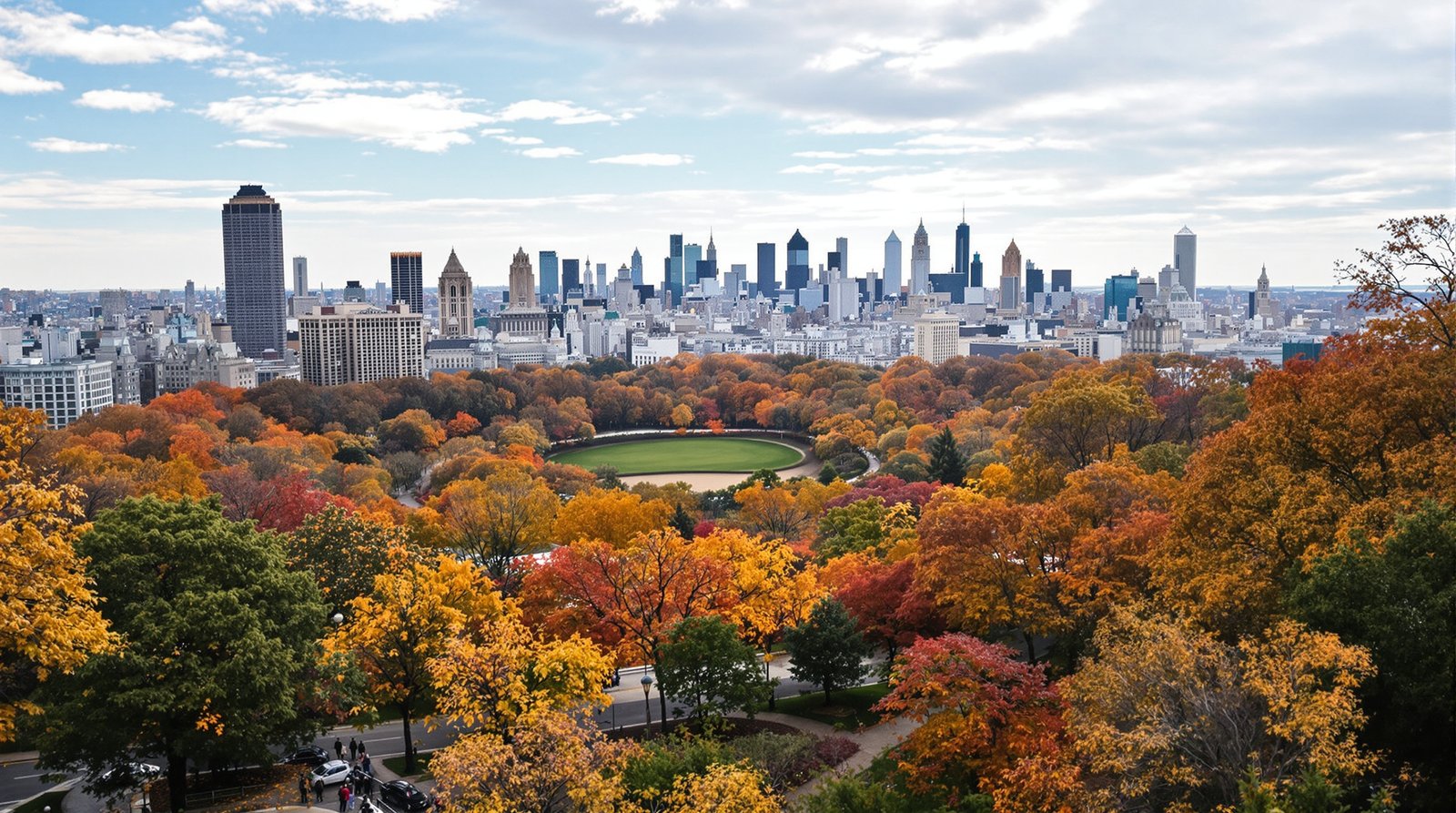
Exploring the Museum Mile: The Met or MoMA?
Choosing between The Met and MoMA can be tough, as both are world-class institutions. If you’re a fan of classical art, ancient history, and seeing a bit of everything, The Met is your best bet. Its collection is encyclopedic, ranging from Egyptian temples to European masterpieces by Rembrandt and Vermeer. You could easily spend a full day here, so it’s wise to pick a few exhibits that interest you most. Don’t miss the stunning views of Central Park from the rooftop garden (open seasonally).
If your tastes lean more towards the 19th and 20th centuries, MoMA is the place for you. It houses an unparalleled collection of modern art, including iconic works like Van Gogh’s The Starry Night, Picasso’s Les Demoiselles d’Avignon, and Warhol’s Campbell’s Soup Cans. The museum’s design is a work of art in itself, with a beautiful sculpture garden providing a peaceful oasis in the middle of Midtown.
For a 3-day itinerary, it’s best to choose one. Trying to do both in a single day would be exhausting and you wouldn’t be able to appreciate either fully. You can find more information on exhibits and book your tickets in advance on The Met’s official website. Pre-booking is highly recommended to save time waiting in line.
Day 2 Afternoon: Empire State Building & Midtown
After a morning of culture, it’s time to see the city from above. We’re heading to one of the most famous skyscrapers in the world: the Empire State Building. This Art Deco icon has captured the world’s imagination since it was completed in 1931. The journey up is an experience in itself, with exhibits detailing the building’s incredible construction and its role in pop culture.
The main event, of course, is the 86th-floor open-air observation deck. The 360-degree views are simply spectacular. You can see the entire grid of Manhattan, the rivers snaking around the island, the Statue of Liberty in the distance, and far beyond. It gives you a true sense of the city’s immense scale. For an even more exclusive experience, you can purchase tickets to the newly renovated 102nd-floor observatory, which offers floor-to-ceiling windows.
To avoid the longest lines, it’s best to visit mid-afternoon on a weekday. Booking your tickets online in advance is a must. You can select a time slot, which helps manage the flow of visitors and reduces your wait time significantly. Check out the official Empire State Building website to purchase your tickets and plan your visit. It’s an unforgettable experience that will be a highlight of your New York itinerary.

Day 2 Evening: Food & Nightlife
After a day of walking and sightseeing, you’ve earned a fantastic New York dinner. The city’s culinary scene is one of the most diverse in the world, offering everything from Michelin-starred restaurants to humble, delicious street food. For your second night, I recommend exploring the neighborhoods of the West Village or the East Village for dinner. These areas are brimming with incredible restaurants for every taste and budget.
In the West Village, you’ll find charming, tree-lined streets and cozy, intimate restaurants perfect for a memorable meal. The East Village, on the other hand, has a grittier, more eclectic vibe, with a huge variety of international cuisines, trendy ramen shops, and old-school Ukrainian diners. It’s a great place to be adventurous and try something new.
After dinner, experience New York’s famous nightlife with a drink at a rooftop bar. There’s nothing quite like sipping a cocktail while gazing out at the glittering skyline. Many hotels in Midtown and the Lower East Side have rooftop bars that are open to the public. For a unique culinary experience, you could also consider joining one of the many guided food tours that explore different neighborhoods, giving you a taste of the city’s best bites with insights from a local guide.
Day 3 Morning: Brooklyn Bridge & DUMBO
On your final day, we’re venturing beyond Manhattan to explore the borough of Brooklyn. Our morning starts with one of the most iconic walks in New York: crossing the Brooklyn Bridge. For the best experience, take the subway to the Brooklyn side (High Street or Clark Street stations) and walk back towards Manhattan. This way, you’ll be facing the spectacular skyline the entire time.
The walk takes about 30-45 minutes at a leisurely pace, but you’ll want to allow extra time for photos. The bridge is a marvel of 19th-century engineering, and the views of the Statue of Liberty, the Empire State Building, and the downtown skyline are simply unparalleled. Be sure to stay in the pedestrian lane, as the other side is for cyclists.
Once you’ve crossed the bridge, you’ll find yourself in the trendy and picturesque neighborhood of DUMBO (Down Under the Manhattan Bridge Overpass). This former industrial area is now known for its cobblestone streets, converted warehouses, art galleries, and stunning waterfront views. Head to Washington Street for the famous photo of the Manhattan Bridge perfectly framed by the red-brick buildings. Then, stroll through Brooklyn Bridge Park for more incredible skyline vistas and a ride on the beautifully restored Jane’s Carousel.

Day 3 Afternoon: Hidden Gems & Local Neighborhoods
For your final afternoon, let’s dive into some of Manhattan’s most characterful neighborhoods. Take the subway to Greenwich Village, often just called “the Village.” This is the New York you’ve seen in movies, with its leafy streets, historic brownstones, and bohemian vibe. It was the epicenter of the 60s counterculture movement and remains a hub of creativity.
Get lost in its winding streets, which defy Manhattan’s rigid grid system. Stroll through Washington Square Park, watch the street performers, and admire the iconic arch. The Village is also home to some of the city’s best jazz clubs, cozy cafes, and unique shops. It’s the perfect place for an afternoon of aimless wandering and discovery.
If you’re feeling adventurous and want to see another side of Brooklyn, hop on the L train to Williamsburg. This neighborhood is the epicenter of Brooklyn cool, known for its indie music scene, street art, vintage shops, and artisanal food. Walk down Bedford Avenue, the main drag, and explore the surrounding streets to find unique boutiques and galleries. For a deeper dive into the Village’s history, you can find excellent walking tours on Viator that bring its fascinating stories to life.
Day 3 Evening: Farewell to New York
For your last evening in the city, it’s time for a farewell dinner that encapsulates the magic of your trip. There are countless options depending on your mood. You could opt for a classic New York steakhouse experience, find a restaurant with a view of the skyline you’ve come to know, or return to a neighborhood you fell in love with to try one more spot.
One wonderful option is to have dinner in DUMBO, where you can dine at a waterfront restaurant with the illuminated Manhattan skyline as your backdrop. The view of the Brooklyn Bridge and the city lights twinkling across the East River is truly breathtaking and a perfect way to say goodbye. It’s a cinematic end to your New York story.
Alternatively, you could enjoy a final stroll through a favorite area, perhaps grabbing a classic New York slice of pizza for a casual and authentic last meal. Whatever you choose, take a moment to soak it all in: the sounds, the energy, and the incredible feeling of being in the heart of it all. New York has a way of staying with you long after you’ve left, and this final evening is your chance to create one last lasting memory.
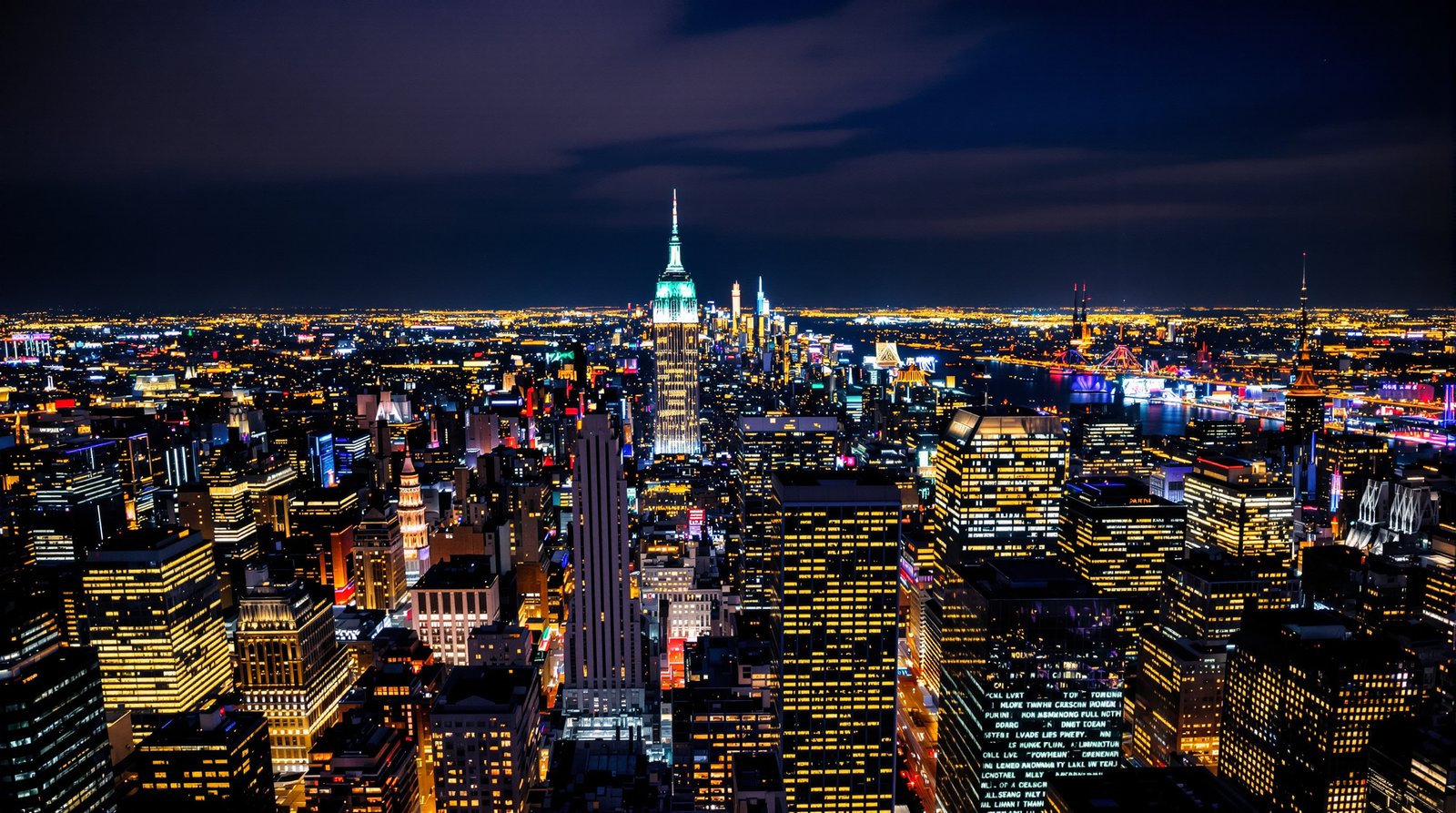
Optional Day Trips
If you have an extra day or are planning a longer return trip, New York City is a fantastic base for exploring the wider region. There are several incredible destinations that are easily accessible for a day trip, offering a complete change of scenery from the urban jungle.
One of the most spectacular options is a trip to Niagara Falls. While it’s a long day, several tour operators offer bus or plane packages that make it manageable. Seeing the sheer power and beauty of the falls is a once-in-a-lifetime experience. It’s a dramatic contrast to the concrete canyons of Manhattan and a powerful reminder of nature’s grandeur.
Closer to the city, you could take a train to the Hamptons on Long Island for a taste of the glamorous beach life, or head to Philadelphia for a day steeped in American history. Another great option is exploring the beautiful Hudson Valley, known for its charming towns, historic estates, and scenic hikes. These trips offer a wonderful way to expand your East Coast adventure.
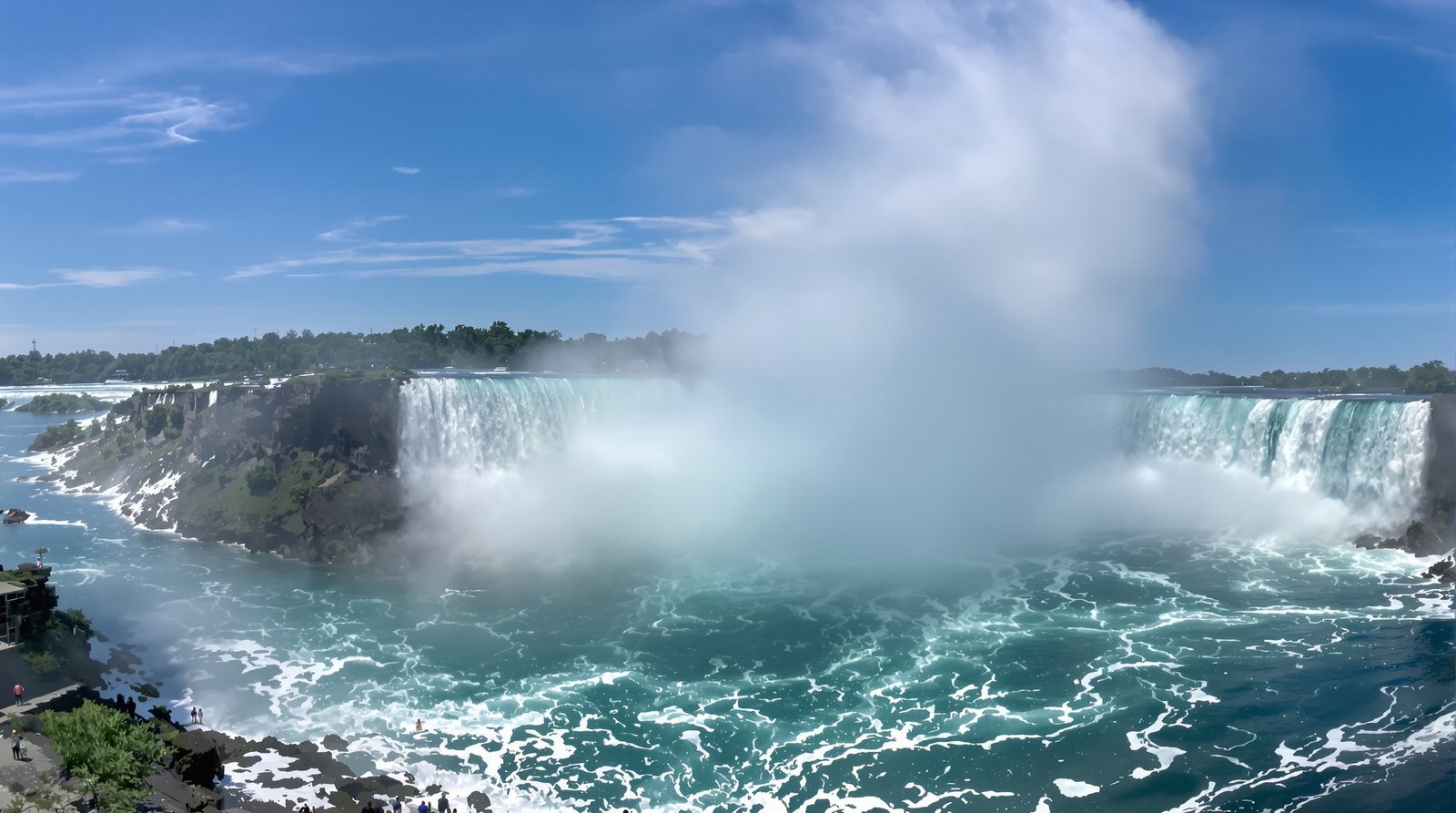
Practical Tips for a 3-Day Itinerary
To make your 3 days in New York smooth and enjoyable, a few practical tips go a long way. First, wear comfortable shoes! You will be doing a tremendous amount of walking. Even when using the subway, getting to and from stations adds up. This is the single most important piece of advice I can give any visitor.
When it comes to budgeting, New York can be as expensive or as affordable as you make it. Save money on food by grabbing a classic $1 pizza slice for lunch, eating from food trucks, or having a picnic in Central Park. Many of the best experiences, like walking the Brooklyn Bridge and exploring neighborhoods, are completely free. Also, consider purchasing a CityPASS or a similar attraction pass if you plan on visiting many paid sights, as it can offer significant savings.
For international travelers, managing money is crucial. Instead of dealing with high fees at airport currency exchange kiosks, it’s much smarter to use a modern service. For the best rates and lowest fees when you exchange your currency, consider a multi-currency account that allows you to spend like a local. Finally, always be aware of your surroundings, especially in crowded areas, but don’t be afraid to ask for directions—New Yorkers are generally more helpful than their reputation suggests.
Getting Around the City
Navigating New York is surprisingly easy thanks to its world-class public transportation system. The subway is the fastest and most efficient way to get around. It runs 24/7 and can take you almost anywhere you need to go. Before you arrive, download a subway map app on your phone, and you’ll be navigating like a local in no time. You can pay per ride using a contactless credit card or your phone with OMNY, the tap-to-pay system.
Buses are another great option, especially for crosstown travel where subway lines are less frequent. They are slower than the subway but offer a great way to see the city as you travel. Taxis and ride-sharing services like Uber and Lyft are plentiful but can be expensive, especially during peak hours or in heavy traffic. They are best used for short trips or late at night when you prefer a direct ride.
While you won’t need a car within the five boroughs—in fact, it would be a major liability due to traffic and expensive parking—you might consider one for exploring outside the city. If you’re planning a day trip to the Hudson Valley or the Hamptons, renting a car for the day can give you the freedom and flexibility to explore at your own pace. Just be sure to pick it up on your way out of the city to avoid the downtown traffic nightmare.
Travel Insurance & Booking Essentials
No matter how well you plan, unexpected things can happen. A flight can be canceled, luggage can get lost, or you might have a medical issue. This is especially true in a fast-paced city like New York. That’s why I never travel without comprehensive travel insurance, and I strongly advise you to do the same, even for a short 3-day trip.
The peace of mind it provides is invaluable. Good travel insurance will cover you for trip cancellations, medical emergencies, travel delays, and lost or stolen belongings. The cost of healthcare in the United States is extremely high, and a simple visit to the emergency room could result in a bill for thousands of dollars. It’s a small investment that protects you from potentially huge financial losses.
When you’re booking your trip, make this a priority. There are many providers out there, so it’s important to find one that suits your needs. For visitors to the US, it’s worth looking into plans specifically designed for international travelers. You can easily compare policies and get a quote online to ensure you’re covered from the moment you book your trip until you safely return home.
Conclusion
Three days in New York City may not seem like a lot of time, but as this itinerary shows, you can experience an incredible amount of what makes this city so magnetic. From the historic heights of the Empire State Building to the cobblestone streets of DUMBO, and from the tranquility of Central Park to the vibrant chaos of Times Square, you’ve journeyed through the very heart of the Big Apple. You’ve balanced the iconic sights that define the skyline with the intimate, local moments that define its soul.
This journey is more than just ticking off landmarks; it’s about feeling the city’s rhythm. It’s the taste of your first real New York bagel, the sound of a saxophone in a subway station, the awe of seeing the skyline from the Brooklyn Bridge, and the energy of the crowds all around you. You’ve seen how history and modernity coexist, how cultures from around the world blend together, and how resilience and creativity are woven into the city’s fabric. New York is a city that demands to be experienced with all your senses, and hopefully, this guide has helped you do just that.
Now that you have the perfect blueprint for your adventure, the only thing left to do is bring it to life. Let us help you put all the pieces together seamlessly by planning your journey with our smart booking tools.
FAQs
1. Is 3 days enough for a first-time visit to New York?
Three days is a great amount of time for a first taste of New York City. It allows you to see the major iconic landmarks in Manhattan and get a feel for a couple of different neighborhoods without feeling too rushed. You won’t see everything, but you’ll leave with a fantastic overview and a list of things to see on your next visit.
2. What is the best way to pay for things in NYC?
Credit cards are accepted almost everywhere. It’s a good idea to have a card with a tap-to-pay feature for easy payment on subways and buses. While cards are king, it’s always wise to carry a small amount of cash for small purchases, tips, or the rare cash-only spot.
3. How much should I budget for a 3-day trip?
Your budget can vary wildly. A frugal traveler could manage on $150-$200 per day (excluding accommodation) by focusing on free activities and budget-friendly food. A mid-range budget would be closer to $250-$350 per day, allowing for paid attractions, a Broadway show, and sit-down meals. A luxury trip could be anything above that.
4. Is the New York subway safe for tourists?
Yes, the subway is generally very safe, and millions of people use it every day without incident. As in any big city, be aware of your surroundings, keep your valuables secure, and avoid empty train cars late at night. Stick to populated stations and trust your instincts.
5. What should I pack for a 3-day trip?
Comfortable walking shoes are non-negotiable. Pack layers, as the weather can change throughout the day. Depending on the season, you’ll need a warm coat and hat in winter or light, breathable clothing in summer. Also, bring a portable charger for your phone, as you’ll be using it for maps, photos, and more.
6. Do I need to tip in New York?
Yes, tipping is a standard part of the culture. For restaurant servers, a tip of 18-20% is expected. For bartenders, $1-2 per drink is standard. It’s also customary to tip taxi drivers (15-20%) and hotel staff like bellhops ($1-2 per bag).
7. What is the best observation deck in NYC?
This is a matter of personal preference! The Empire State Building offers classic, historic charm. Top of the Rock at Rockefeller Center is famous for its unobstructed views of the Empire State Building and Central Park. Summit One Vanderbilt provides a modern, immersive art experience with its mirrored rooms. For a 3-day trip, choosing one is usually best.


